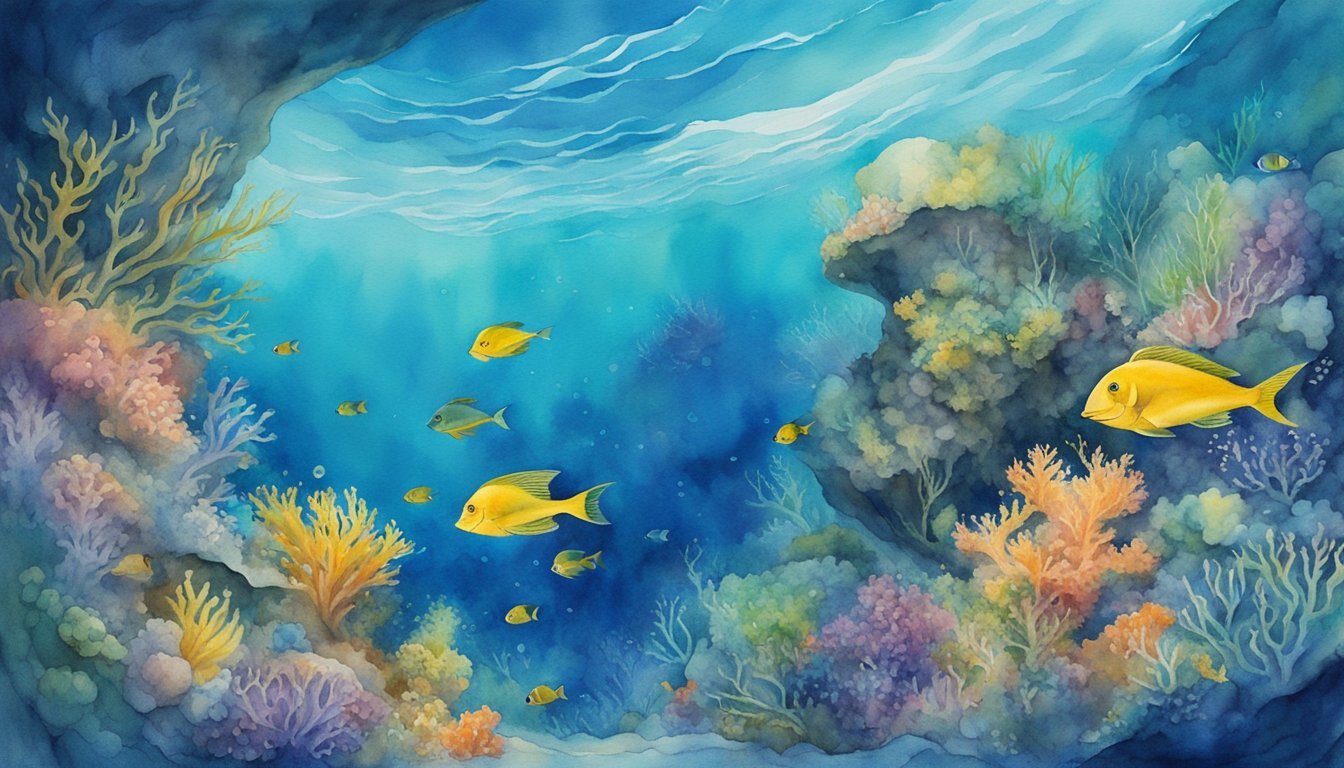Discovering the Depths of the Mariana Trench
The Mariana Trench represents one of the most enigmatic and deep parts of the ocean, holding records for its depths and being the subject of numerous expeditions.
Historical Expeditions and Achievements
The initial challenge to gauge the depth of the Mariana Trench was undertaken by the HMS Challenger in 1875, using sounding equipment to measure a depth of 26,850 feet. However, it wasn’t until 1960 that the trench’s deepest point, the Challenger Deep, was more accurately measured by oceanographer Don Walsh and Jacques Piccard in the bathyscaphe Trieste. Trieste descended to about 35,814 feet, a record that stood for decades. In 2012, film director James Cameron repeated this historic dive in the Deepsea Challenger, descending to an impressive depth of approximately 35,787 feet. More recently, in 2019, explorer Victor Vescovo reached a depth of 35,853 feet as part of the Five Deeps Expedition using the submersible DSV Limiting Factor, making it one of the deepest manned sea dives.
These human achievements are complemented by unmanned explorations, such as the Scripps Institution of Oceanography’s dive that deployed the autonomous underwater vehicle, Nereus, into the Challenger Deep, while NOAA’s expeditions using sonar technology have contributed greatly to mapping the trench’s complex geography.
Geography and Geology of the Trench
The Mariana Trench is located in the western Pacific Ocean, east of the Mariana Islands, near Guam. It is a crescent-shaped scar in Earth’s crust, stretching over 1,500 miles and reaching widths of approximately 43 miles. The trench exists due to the subduction of the Pacific plate beneath the smaller Philippine Sea plate.
At a depth of nearly 7 miles, or over 36,000 feet in the Challenger Deep, the Mariana Trench is considered the deepest part of Earth’s oceans. The trench’s geology reveals a story that dates back over 180 million years, with its complex undersea landscape including features like the Sirena Deep, other nearby trenches, and the Marianas Trench Marine National Monument, which preserves much of the region and its unique ecosystem. The geologic processes at play in the trench, such as tectonic shifts, have been crucial in shaping not only the trench itself but also understanding Earth’s geology.
Scientific expeditions, such as the notable Challenger Expedition and consistent efforts by the NOAA and other organizations, continue to explore these depths. Technology like sonar mapping and advanced submersibles has been pivotal in revealing the trench’s secrets, shedding light on this dark and mysterious region of the ocean.
Life and Environmental Features

The Mariana Trench is not only the deepest part of the world’s oceans but also home to an array of unique life forms that thrive under conditions that would be inhospitable for most other species. This section examines the fascinating marine biology that exists in such an extreme environment and considers the impact that humans have on this deep-sea habitat.
Marine Biology: Creatures of the Deep
In the hadal depths of the Mariana Trench, life flourishes despite the absence of sunlight and the extraordinary pressure. Species such as the Mariana snailfish have adapted to this intense pressure, which can exceed 1,000 times the atmospheric pressure at sea level. The trench’s waters teem with a surprising variety of organisms, from tiny foraminifera to larger creatures like sea cucumbers and amphipods, which have evolved to withstand the high pressure and cold temperatures. Within the sediment, a community of microbes contributes to the trench’s unique ecosystem by processing materials such as sulfur and carbon dioxide.
Environmental Conditions and Human Impact
The bottom of the Mariana Trench presents one of the most challenging environments on Earth due to the intense pressure, low temperatures, and complete darkness. Hydrothermal vents spew superheated water into the near-freezing trench, introducing minerals that support diverse microbial life. Despite its remoteness, the Mariana Trench is not isolated from human activities. Scientists have found evidence of human impact, including plastic bags and other pollutants at the seabed, which raises concerns about the reach of contamination. The trench is also adjacent to subduction zones, where one tectonic plate slides beneath another, affecting its geology and potentially presenting risks from activities such as deep-sea mining or disposal of nuclear waste.

